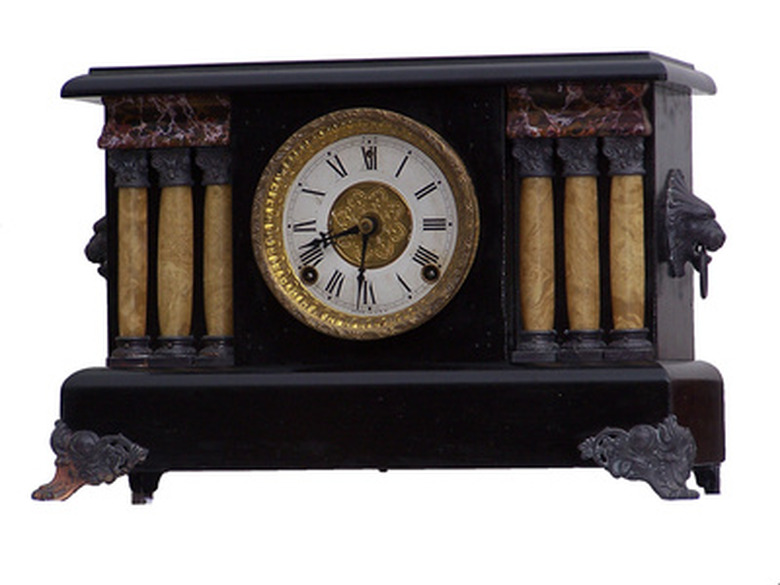Clock-Cleaning Solutions And Ingredients
You must use a specially formulated clock-cleaning solution to clean an antique clock. The cleaning process is tedious, since it requires that you clean each individual clock part separately. Failing to clean your clock can cause residue to damage components and render the clock unusable. You can either purchase a commercial clock-cleaning solution, or prepare one at home that contains similar ingredients as those found in commercial solutions, to keep your antique clock operational.
Commercial Clock Cleaning Solution
Commercial Clock Cleaning Solution
TimeSavers.com sells a clock-cleaning solution called Historic Time Keepers. It's a commercially produced clock-cleaning solution that rivals most homemade solutions, according to Michael P. Murray and Mike's Clock Clinic. The solution is a chemical blend of 5 percent oleic acid, 4 percent ammonium hydroxide, 1 percent methocel and 1 percent pine oil that is combined with water. The solution effectively cleans a clock's parts of dust and residue.
Homemade Clock-Cleaning Formula
Homemade Clock-Cleaning Formula
If you do not want to purchase a clock-cleaning solution, Michael P. Murray and Mike's Clock Clinic has developed a solution you can make at home. Locate a plastic container that can hold at least a gallon of clock-cleaning solution and has a secure lid. Remove the lid and pour a half of a gallon of purified water into the container. Mix 4 ounces of commercial acetone and 4 ounces of oleic acid with the water until the chemicals are thoroughly combined. Acetone acts as an emulsifier and helps ensure the ingredients combine. Incorporate 4 ounces of liquid soap–either dish or clothing detergent–to the solution and blend. Add 8 ounces of ammonia with a 27 percent concentration level and mix again until all ingredients have been completely integrated. Combine equal parts of solution and water when you clean your clock. Always wear rubber gloves when working with the solution. Prepare the solution and clean your clock in a well-ventilated area to limit your intake of toxic fumes produced by the chemicals in the solution.
Oleic Acid
Oleic Acid
Oleic acid is found in most clock-cleaning solutions. It is a potent oil and grease solvent that effectively eliminates oil and grease build up on clock parts. You can usually buy it from a chemical supplier or clock company.
Ammonia
Ammonia
Ammonia is a common metal cleaner used in clock-cleaning solutions. You should only use an ammonia-based cleaner on clocks made after 1820. Use an "ammonia-free" cleaner for clocks made before 1820, as ammonia can damage cast brass–a metal often used to make wheels and plates on very old clocks. Chemical suppliers and printing companies typically sell ammonia with a 27 percent concentration level–the kind preferred by clock specialists for its cleaning power.
